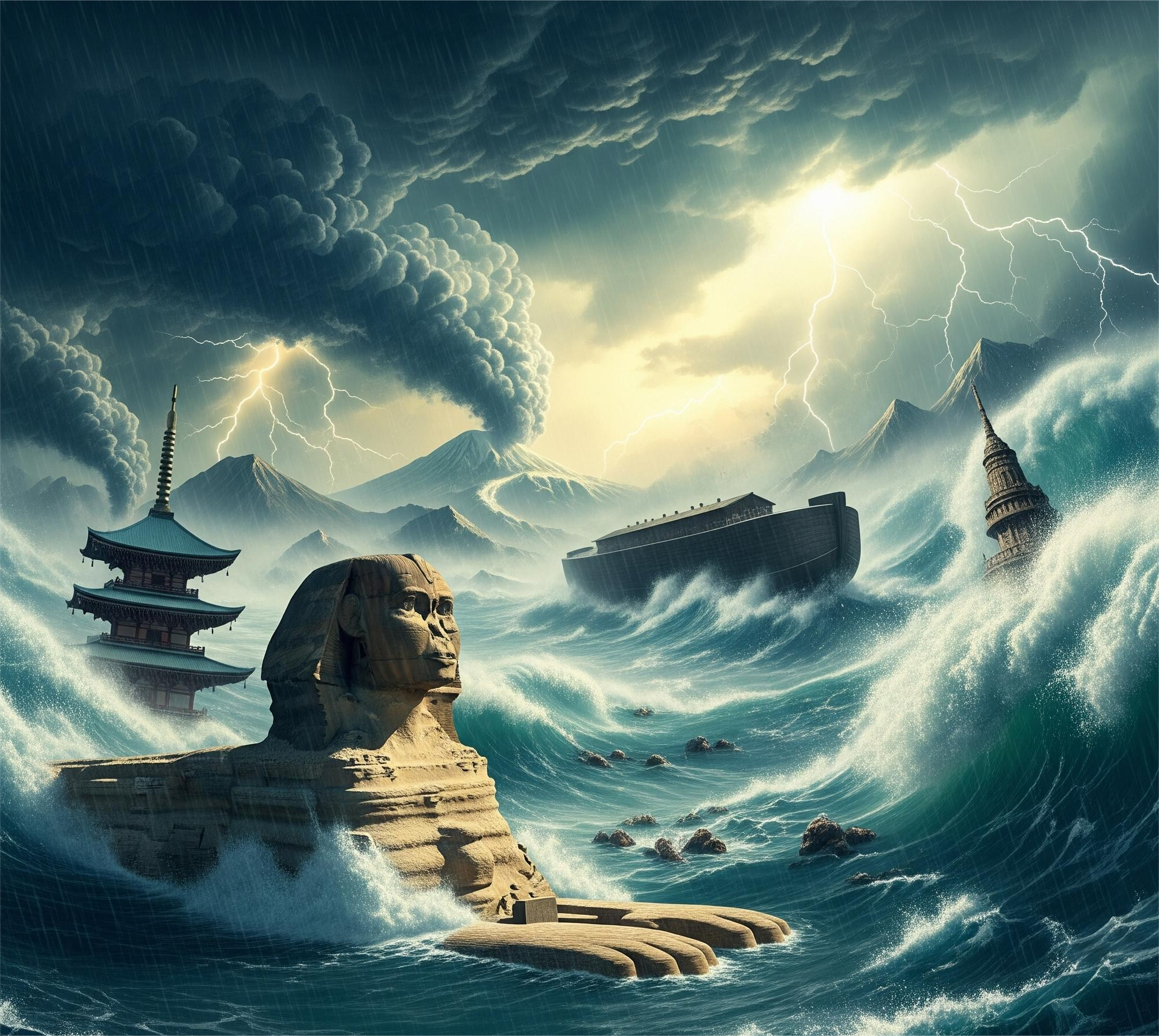Across ancient civilizations, tales of a cataclysmic flood appear with striking consistency. From the Mesopotamian plains to the Vedic hymns of India, from the icy reaches of Scandinavia to the deserts of Canaan, cultures separated by geography and language have recorded stories of a world-destroying deluge. These flood myths not only reflect humanity’s shared fears of natural disaster but also symbolize divine judgment, rebirth, and the renewal of life.
1. Mesopotamian Flood Myth: Utnapishtim and the Epic of Gilgamesh
The Epic of Gilgamesh, one of the oldest known works of literature (circa 2100 BCE), contains a flood narrative that predates the biblical account by centuries. In this tale, the gods decide to wipe out humanity with a massive flood due to their noisiness and disobedience. The god Ea warns the righteous man Utnapishtim, instructing him to build a large boat to preserve his family and "the seed of all living creatures."
Key features:
The flood lasts seven days and nights.
Utnapishtim sends out birds (a dove, a swallow, and a raven) to find dry land.
The ark comes to rest on Mount Nisir.
After the flood, Utnapishtim is granted immortality by the gods.
This story emphasizes divine wrath, survival through obedience, and the notion of a fresh start for humanity.
2. Hindu Flood Myth: Manu and the Fish (Matsya Purana)
In Hindu tradition, the flood myth appears in the Satapatha Brahmana and later in the Matsya Purana. The story follows Manu, the progenitor of mankind, who rescues a tiny fish. The fish reveals itself to be Vishnu in disguise and warns Manu of a coming deluge.
Key features:
Vishnu, as the Matsya Avatar (a giant fish), guides Manu’s boat through the flood.
Manu carries seven sages, seeds, and animals on the boat.
After the waters subside, Manu performs a sacrifice, and from it, a new human race is born.
This myth reflects themes of dharma (duty), divine protection, and cosmic cycles of destruction and rebirth.
3. Norse Flood Myth: The Blood of Ymir and the Drowned World
In Norse mythology, there is no flood caused by rain, but the cosmos is indeed submerged in water early in its creation narrative. The world is formed from the slain body of the primordial giant Ymir, and his blood causes a great flood that drowns most of the early frost giants.
Key features:
Ymir is killed by Odin and his brothers.
His blood floods the world, killing all but two giants who escape in a wooden box.
Later, in Ragnarök, the apocalyptic future event, the world is again flooded by the sea, signaling the end and rebirth of the world.
Unlike other traditions, the Norse flood is part of a cyclical mythological structure, emphasizing destruction as a necessary precursor to regeneration.
4. Biblical Flood Myth: Noah’s Ark (Genesis 6–9)
One of the most widely known flood myths is found in the Hebrew Bible, where God decides to destroy humanity due to its wickedness. He chooses Noah, a righteous man, to build an ark and preserve life.
Key features:
The flood lasts 40 days and 40 nights.
Noah brings his family and pairs of all animals onto the ark.
He sends out a raven and a dove to scout for land.
The ark rests on Mount Ararat.
God makes a covenant, promising never to flood the Earth again, symbolized by a rainbow.
This account, like the Mesopotamian version, presents a story of judgment, obedience, and divine mercy.
Symbolism and Legacy
Flood myths are more than ancient stories of disaster—they are symbolic narratives about renewal. Water, destructive yet cleansing, becomes a metaphor for wiping the slate clean and starting anew. The survivor, often chosen by divine favor or moral purity, becomes the seed of a reborn humanity.
These myths also underscore a recurring idea: the fragility of human civilization in the face of divine or cosmic forces. They reinforce social and moral codes, stressing obedience, righteousness, and humility.
Today, flood myths continue to inspire literature, film, and theological debate. They remind us not only of our vulnerability to natural forces, but of the enduring human hope that after every deluge, there is a chance to rebuild.







